#PlymouthCriket
Abandoned History: Chrysler and the Colt, Captive Economical Import Time (Part VII)
We arrive at the end of our Dodge Colt journey today. Colt started in 1971 as a cooperative program to provide Mitsubishi with a sales outlet in North America, and Chrysler with a compact and fuel-efficient car it didn’t have to design or build. Over the years the Colt evolved with the needs of the consumer and branched out into several different body styles.
Eventually, the tides shifted. Mitsubishi established their own dealerships in the United States (but not Canada) and started selling identical cars as were on Dodge/Plymouth dealer lots. Then, as Eagle came into being it also needed product to sell. Chrysler turned Eagle into its de facto outlet for imports and Mitsubishi cooperative products: Colts of regular and wagon persuasion became Eagles called Vista and Summit, in addition to their Dodge and Plymouth twins.
Last time we left our tale it was the dawn of 1993, and Colts were badged at Eagle dealers as a new generation of Summit. The Vista Wagon name was dead, now called Summit Wagon. Dodge, Plymouth, and Eagle dealers had an exciting new Colt as well! But it didn’t last long.
Abandoned History: Chrysler and the Colt, Captive Economical Import Time (Part VI)
We rejoin the world of the Colt today, specifically the lineup on sale at various Dodge, Plymouth, and now Eagle dealers in the United States and Canada in the early Nineties. The addition of Eagle to Chrysler’s brand portfolio for the 1988 model year had a direct effect on the future of Colt: Almost immediately the Colt sedan was drafted onto the Eagle team, where it became the more expensive Summit.
Remaining as Colts in the US in 1990 were the hatchback and the dated Colt Vista and wagon. Canadians were offered the contemporary Colt sedan and hatchback, while the Colt Vista was sold over the border as the Eagle Vista Wagon. The Vista Wagon was accompanied in Canada by the old Colt sedan from the mid-Eighties, branded as Eagle Vista sedan and offered only as a very basic vehicle. We pick up at the beginning of the 1991 model year.
Abandoned History: Chrysler and the Colt, Captive Economical Import Time (Part V)
When we last left off in the tale of Dodge, Plymouth, and Eagle’s various Colt branding adventures, it was the late Eighties. After a wave of modernization in 1984-1985 where the first Colt sedan appeared and the range extended into the larger and very forward-thinking Colt Vista, Mitsubishi got in on the Colt action and sold a hatchback with its OEM diamond star up front and Mirage lettering on the back. As the Nineties approached, it was time for a new generation of Colts, and more options from a hot new brand: Eagle.
Abandoned History: Chrysler and the Colt, Captive Economical Import Time (Part IV)
By the early Eighties Chrysler was deep into its product partnership with Mitsubishi, which in North America was most visible via the mutually beneficial Colt. A lineup of rebadged Mitsubishis, the Colt expanded from its rear-drive beginnings in 1971, morphing into a rear- and front-drive mix by the end of the Seventies. In the earliest part of the Eighties, the line was consolidated into a single front-drive hatchback model. Around the middle of the decade, it was time for a fifth-generation Colt and some more lineup expansion. But this time, Dodge and Plymouth dealers wouldn’t be the only ones selling a Colt.
Abandoned History: Chrysler and the Colt, Captive Economical Import Time (Part III)
After Mitsubishi vehicles made their way to Dodge and Plymouth dealerships as the Colt in 1971, Chrysler expanded the fledgling model’s lineup quickly. Nine years after its introduction, the third generation Colt offerings (two different Mitsubishi models) were being discontinued. Accompanying the old Colts on the lot were all-new ones, though old and new alike were sold as ’79 model year cars. It’s Twin Stick time.
Abandoned History: Chrysler and the Colt, Captive Economical Import Time (Part II)
Chrysler had its first involvement with Mitsubishi Motors Corporation in 1971. With a considerable stock purchase by Chrysler, the two companies’ long-lived captive import cooperation began. Introduced immediately to Americans in 1971 as the Dodge Colt, the nameplate was on its second generation by 1977. We pick up in the middle of that year, as third-gen Colts started to arrive from Japan. In the unusual arrangement, brand new (and differently sized) Colts were sold alongside second-gen Colts during the same model year.
Abandoned History: Chrysler and the Colt, Captive Economical Import Time (Part I)
For over 20 years Chrysler offered various Mitsubishi offerings as rebadged captive import vehicles in the North American market. For a handful of years, a Colt at your Chrysler-Dodge-Plymouth-Jeep-Eagle-DeSoto-AMC dealer was the exact same one you’d buy at the Mitsubishi dealer across the street. Let’s take some time and sort out the badge swapping history of Colt.




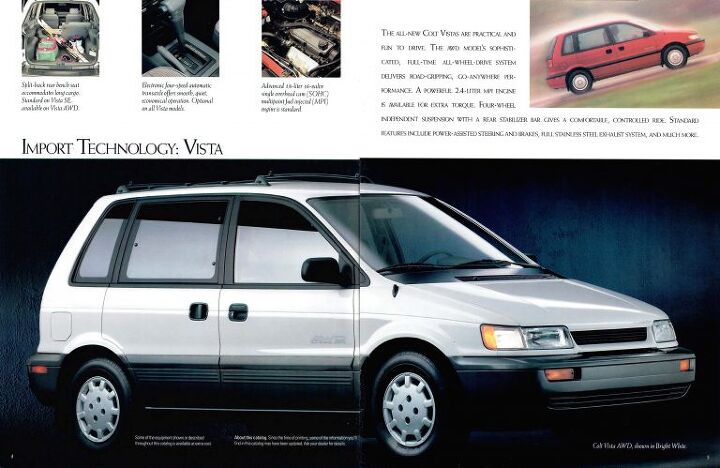
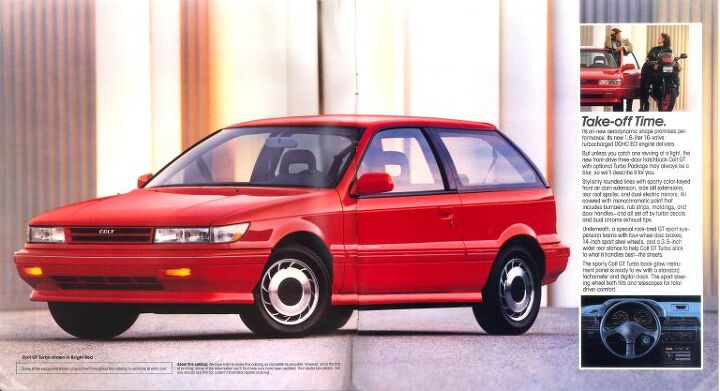
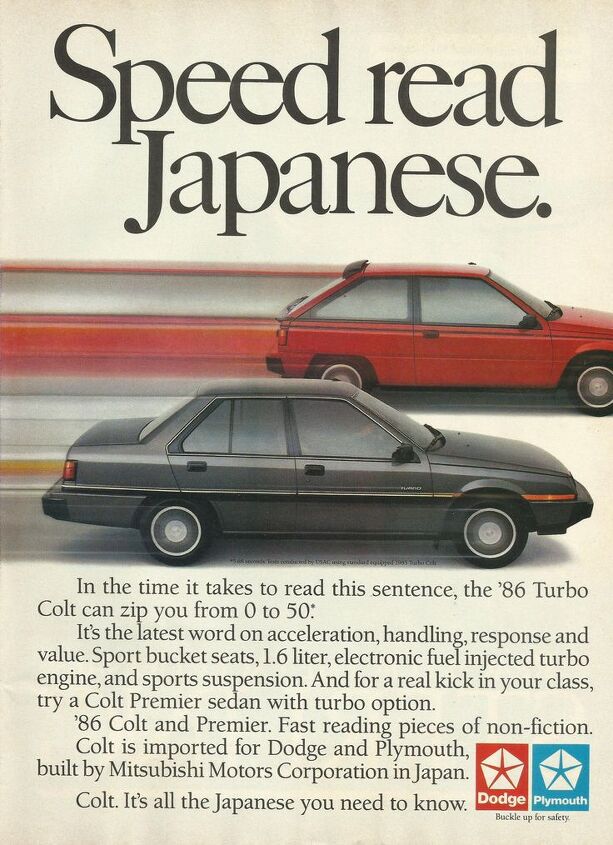
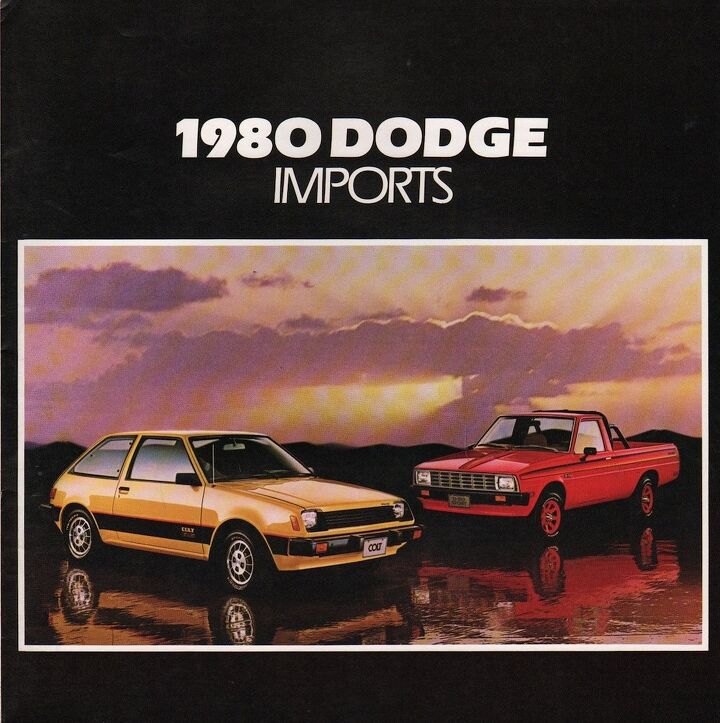
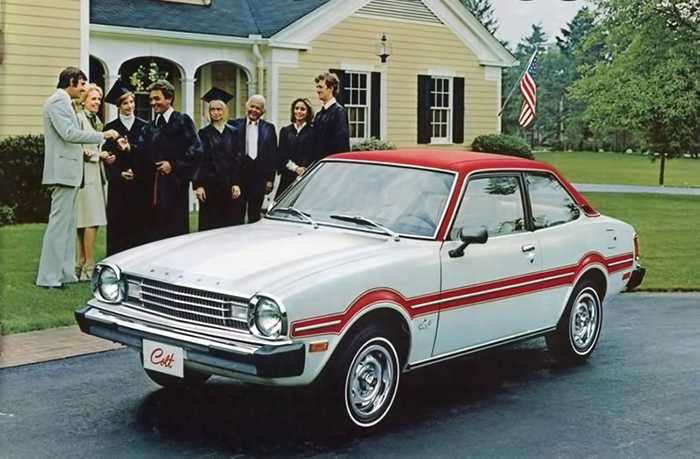
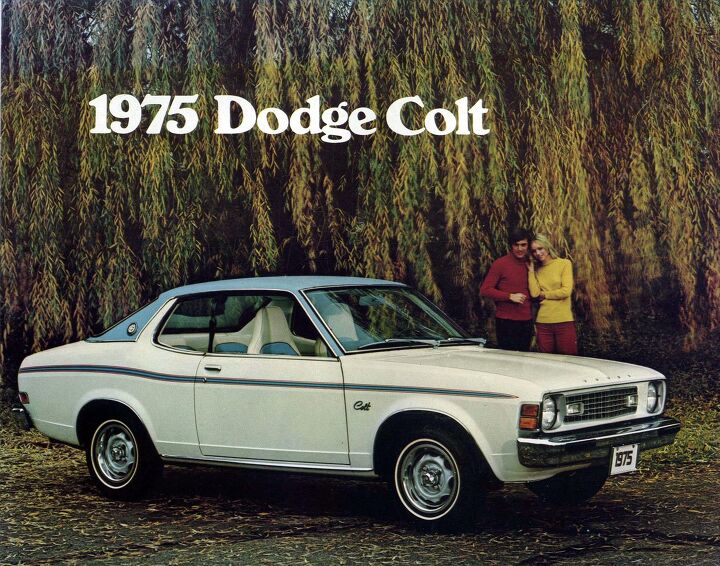












Recent Comments